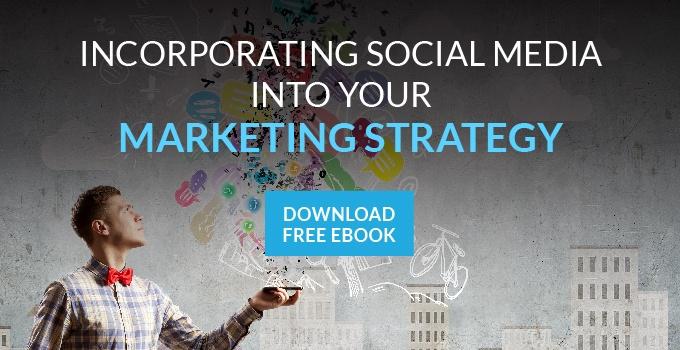 There are many facets to a successful marketing campaign. On this blog, we talk a lot about content creation, blogging, and website development. These all are primarily centered around the process of lead generation, nurturing those leads, and converting them into buyers. But there’s so much more to successful marketing.
There are many facets to a successful marketing campaign. On this blog, we talk a lot about content creation, blogging, and website development. These all are primarily centered around the process of lead generation, nurturing those leads, and converting them into buyers. But there’s so much more to successful marketing.
Marketing is not just about lead generation
While much of our focus in discussions about inbound marketing is about lead generation, we shouldn’t fall into the trap of thinking that it’s all about closing deals. Attracting visitors to our website, keeping them engaged with valuable content, and ultimately converting them is obviously the goal of the process, and it works extremely well using the tools now available to do so. However, don’t forget that it’s also important to establish a well-developed brand identity.
Social media as a platform for brand identity
Unless you’re in an extremely unique line of work, chances are that, like most companies, you’re working in an oversaturated market. Consumers are constantly bombarded with advertising, on television, in their web browsers, and even on smartphones. In order to succeed, it’s crucial that your company stand out from the rest of the dense crowd in your field. In order for that to happen, you’ll need to develop an online presence that includes something memorable, even singular, about your brand identity. Think of it as the face you put forward to the public. While there are many ways to accomplish this, social media provides an ideal platform for branding, if you use it the right way.
Don’t just use the social networks for promotion
It’s a commonly made mistake, and one that’s not really surprising, considering that much of business social networking is managed by the same people that manage sales and marketing efforts. Most businesses tend to use the social networks simply as another promotional tool. I’m not suggesting that this is a bad idea. Promotions run in the socials can be extremely effective in some cases. But there’s so much more value that can be gotten from more optimal use of these networks. Social media is, above all else, a platform used for sharing and collaborating. When we talk about personal use, it’s often about sharing of photos of one’s life, foods, pets, family members, and so on. People also like to share news stories, articles of interest, and their own thoughts, to elicit comments, discussion, and the much-coveted “likes” from those in their network. Social media-savvy businesses are learning to use the social networks in much the same way - to define “who” they are, their brand identity as the “personality” of the business, if you will.
So, we need to be on social networks. But which one? Or ones?
This is a great question, and it’s really one for which there isn’t necessarily one “right” answer. There are a number of really well-established and well-trafficked networks and each has its own unique qualities and subtleties. As a general answer, most businesses will do well to establish their presence on more than one network, taking advantage of the specifics of each one to accomplish their goals. Let’s take a look at each of the big players.
Facebook is, at this point, the biggest and most ubiquitous of the social networks. As of the second quarter of 2016, Facebook had 1.71 billion active users. Just to be clear, especially for those of us here in the states, who think of Facebook as an American phenomenon, that’s more than 5 times the population of the U.S. It’s also almost a quarter of the world’s population. Clearly, it’s not a market to be ignored.
Because it has such a broad, widespread, and heterogeneous user base, Facebook is a good platform for almost any business to establish a presence on. But by the same token, having such a broad base may also make it a bit more challenging to accurately target the precise demographics you’re looking for.
LinkedIn is the one social network which really has a focus on business users. I’ve heard it referred to as half-jokingly as “Facebook for grownups”. Humor aside, since it’s used to make professional connections, it’s a good venue to catch people when they’re in business mode. So if you’re marketing business to business (B2B) products and services, this could be the ideal forum. As since LinkedIn profiles are essentially a resume, including one’s current job description and role, including their current role, it’s easy to find buyers and procurement people in the companies you want to target to sell to. LinkedIn also allows for longer form posts and articles, in which users write about their expertise, and topics of interest. This allows you to further define who you are, and what you excel at, and establish yourself as an authority in your field.
Twitter is, for some of us, the most difficult of the social networks to really understand. For starters, it’s somewhat difficult to really grasp what it is. Is it glorified text messaging? A news feed? A chat tool? Its 140-character limitation, and the lack of clear “groups” or “communities” make it more challenging. A friend of mine described trying to get information out on Twitter to shouting from the bottom of a dark well.
All that being said, Twitter does have its applications, and can be used effectively for business if it’s done right. The size-restriction on messages can actually work to your advantage, as it forces you to be concise. Viewers may still skip over your tweets as they scroll through their feeds, but it won’t be because your messages are too long for them to read. It’s also easy to embed links to other articles, which can be news stories, or your own blog posts and other content, so you’re not really boxed in by the message size. You can also repeat messages over the course of the day, which will help get them seen by users who are reading their feeds at different times.
Another great application of Twitter is for customer service. I’ve had the experience of reaching a company’s customer service department by Twitter. I’ve also had them see my tweets, asking a question (with them mentioned in the tweet), and respond with just the information I needed. Used this way, you can show that you’re listening for customers’ concerns, and responsive, and that goes a long way to showing what your brand identity really is.
Instagram is perhaps the least business-y of the social networks, and one which, until recently I wouldn’t have considered using for marketing or brand identity purposes. That being said, I was wrong. Instagram is a hugely popular platform, and is extremely popular among millennials, as well as today’s teens, who will be the next generation of consumers. While Instagram posts are “only” pictures, you know the old adage about a picture being worth a thousand words. That’s especially true in the world of social networks, and even more true if you’re selling something visual in nature. Filling users’ feeds with your logo and images of your products will really further establishing your brand identity.
In conclusion, there isn’t really a right or wrong answer as to which social network will be the most effective. For most businesses, it makes sense to use more than one. But it’s important to use each in the optimal way to reach your target audience, and also to keep your brand identity consistent across all these powerful platforms.


Comments